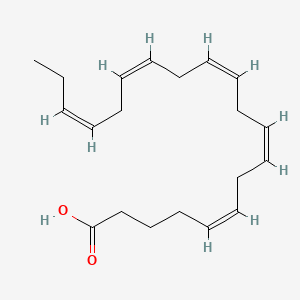| Nagai T et al. |
Circulating Omega-6, But Not Omega-3 Polyunsaturated Fatty Acids, Are Associated with Clinical Outcomes in Patients with Acute Decompensated Heart Failure. |
2016 |
PLoS ONE |
pmid:27824904
|
| Allaire J et al. |
A randomized, crossover, head-to-head comparison of eicosapentaenoic acid and docosahexaenoic acid supplementation to reduce inflammation markers in men and women: the Comparing EPA to DHA (ComparED) Study. |
2016 |
Am. J. Clin. Nutr. |
pmid:27281302
|
| Gramer G et al. |
Long-chain polyunsaturated fatty acid status in children, adolescents and adults with phenylketonuria. |
2016 |
Prostaglandins Leukot. Essent. Fatty Acids |
pmid:27269713
|
| Yoshida S et al. |
Treatment with DHA/EPA ameliorates atopic dermatitis-like skin disease by blocking LTB4 production. |
2016 |
J. Med. Invest. |
pmid:27644556
|
| Cholkar K et al. |
Topical delivery of aqueous micellar resolvin E1 analog (RX-10045). |
2016 |
Int J Pharm |
pmid:26706439
|
| Wolters M et al. |
Associations of Whole Blood n-3 and n-6 Polyunsaturated Fatty Acids with Blood Pressure in Children and Adolescents - Results from the IDEFICS/I.Family Cohort. |
2016 |
PLoS ONE |
pmid:27806134
|
| Mao JT et al. |
Grape Seed Procyanidin Extract Mediates Antineoplastic Effects against Lung Cancer via Modulations of Prostacyclin and 15-HETE Eicosanoid Pathways. |
2016 |
Cancer Prev Res (Phila) |
pmid:27658889
|
| Devassy JG et al. |
Omega-3 Polyunsaturated Fatty Acids and Oxylipins in Neuroinflammation and Management of Alzheimer Disease. |
2016 |
Adv Nutr |
pmid:27633106
|
| Arnold WR et al. |
Asymmetric Binding and Metabolism of Polyunsaturated Fatty Acids (PUFAs) by CYP2J2 Epoxygenase. |
2016 |
Biochemistry |
pmid:27992998
|
| Mason RP et al. |
Eicosapentaenoic acid reduces membrane fluidity, inhibits cholesterol domain formation, and normalizes bilayer width in atherosclerotic-like model membranes. |
2016 |
Biochim. Biophys. Acta |
pmid:27718370
|
